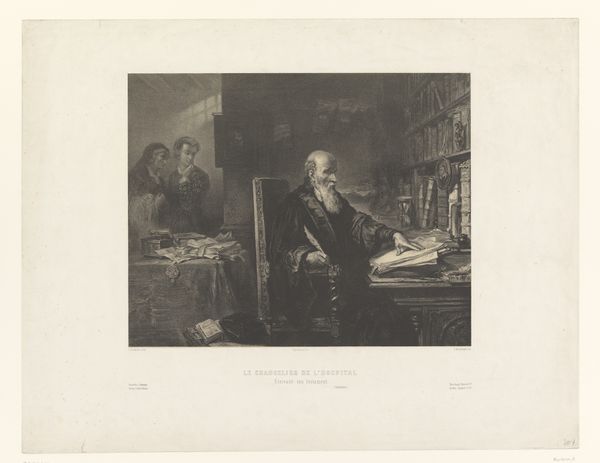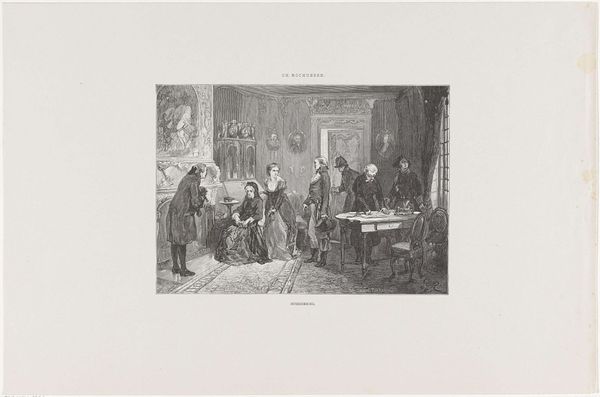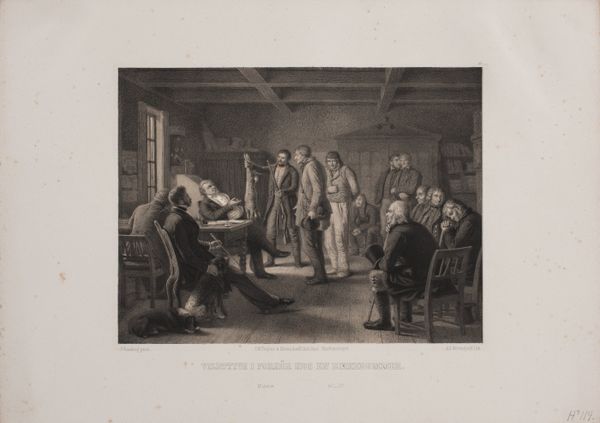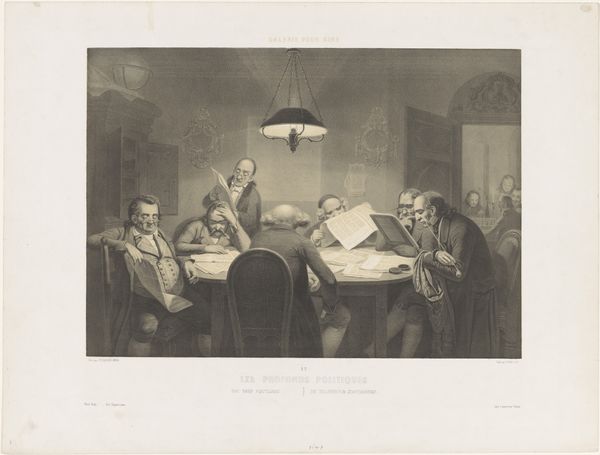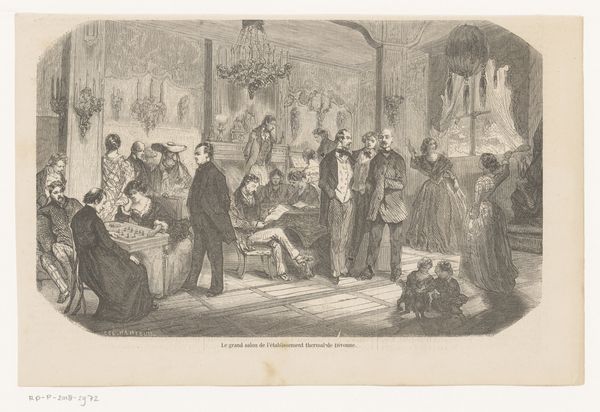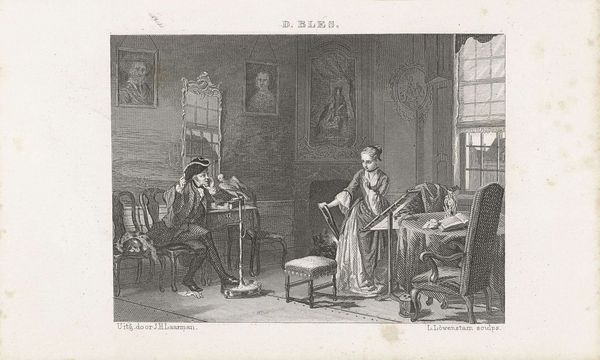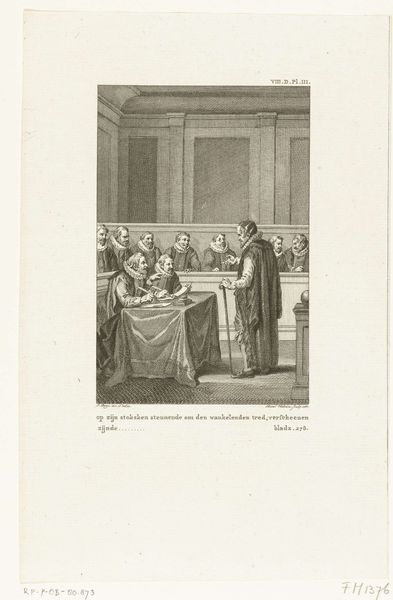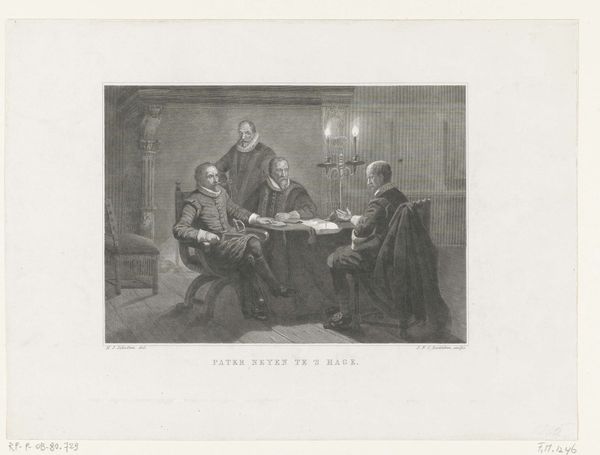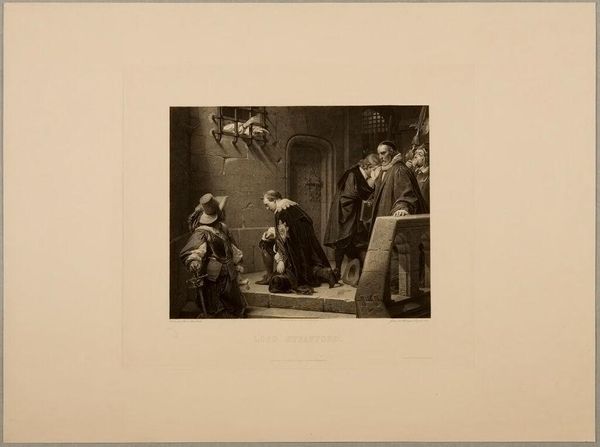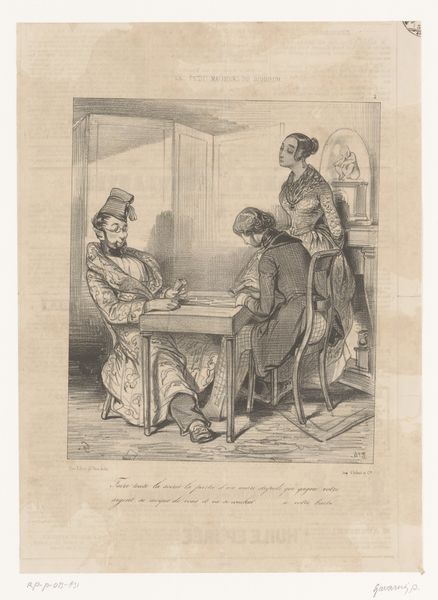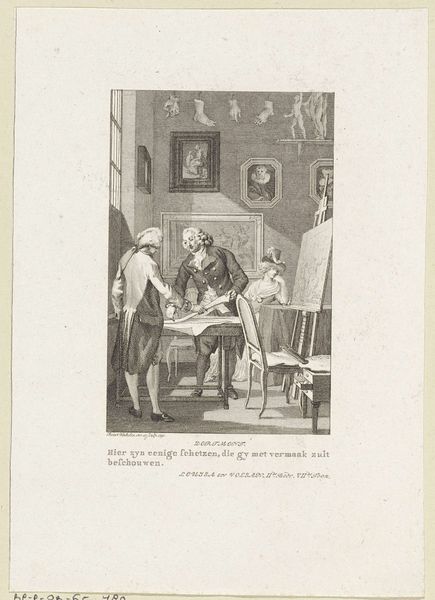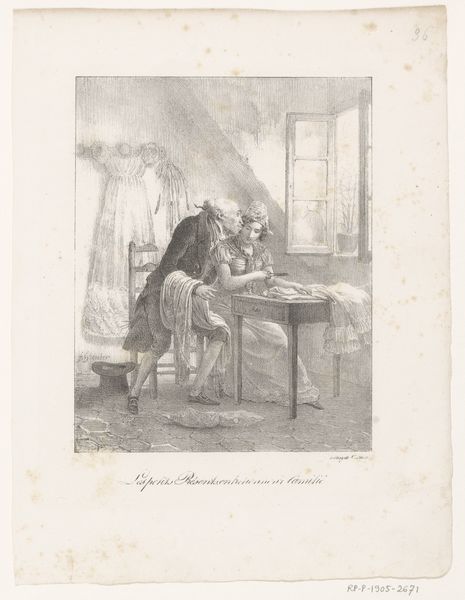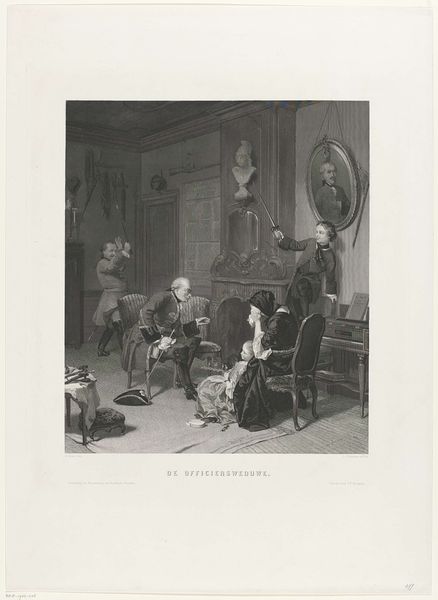
print, engraving
#
portrait
#
medieval
#
narrative-art
# print
#
old engraving style
#
landscape
#
11_renaissance
#
historical photography
#
genre-painting
#
history-painting
#
academic-art
#
engraving
Dimensions: height 184 mm, width 257 mm
Copyright: Rijks Museum: Open Domain
Curator: The work before us is titled "Luther leest de verhalen van de evangelisten," which translates to "Luther Reads the Stories of the Evangelists." It was created sometime between 1822 and 1845 by an anonymous artist and currently resides here at the Rijksmuseum. It is an engraving. Editor: My first impression is how still it all feels. Even with the activity of a library, there's a sense of quiet contemplation—almost staged. Like everyone is playing their role. Curator: Precisely. The print participates in a long tradition of history painting and the historicizing of Luther in the 19th century. Images like this contributed to shaping public perceptions, positioning Luther as a central figure in the Reformation and a champion of religious thought. Editor: And visually, it's like a stage. Luther is, literally, centered. Other scholars seem arranged to either engage with or support him. He’s deep in thought, almost romanticized in his pose. Does this idealized vision serve a particular purpose? Curator: Absolutely. This visual representation of Luther emphasizes his intellectual rigor. By showing him immersed in the Gospels, the artist emphasizes Luther's commitment to the primary texts of Christianity. Editor: I see what you mean. All that bookish labor seems designed to build his image. Did engravings such as these serve some sociopolitical need in 19th-century society? Curator: Definitely. Prints like these helped reinforce cultural values, playing a key role in solidifying historical narratives, and of course bolstering support for the Protestant faith in certain areas of Europe at this time. The format is inherently reproducible, making the narrative extremely shareable across a broad audience. Editor: Makes you wonder about the layers of narrative, right? We see the historical Luther, then an artist's interpretation, and then *we* stand here centuries later interpreting that interpretation. It’s like a game of telephone through time. Curator: I agree; there's a reflexive element to the viewing experience itself, now as then. Each viewer contributes to the meaning of an artwork. Editor: Well, I’m walking away seeing not just Luther but the mechanics of image-making and the shaping of public opinion. Curator: Yes, an artwork of social importance which resonates on many levels, even in today's very different social and political landscape.
Comments
No comments
Be the first to comment and join the conversation on the ultimate creative platform.
